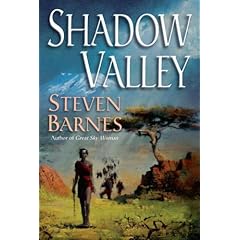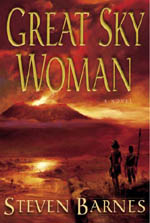Thursday, February 27, 2014
Take the red pill
Posted by
Steven Barnes
at
7:29 AM
3
comments
![]()
Tuesday, February 25, 2014
What an individual needs to succeed
10 basic principles
In general, here are some of the most important things for an individual:
1) The ability to be blisteringly honest, but courageously compassionate.
2) The ability to set clear goals in alignment with the deepest values and beliefs.
3) The capacity to believe in Self deeply.
4) A knowledge of past actions (positive and negative) without that knowledge limiting future options.
5) The ability to take action despite the “noise” of internal voices, if those actions are in alignment with deeply held values and beliefs.
6) The ability to postpone gratification, to move toward a worthy goal in an incremental fashion.
7) The ability to create healthy bonded teams of allies to reach those goals unreachable by an individual. The ability to create a primary bond with another adult, equal human being.
8) The ability to shift fluidly from “Yin” to “Yang”—from female to male modes of thought and action—depending on the circumstance.
9) The ability to raise and focus the physical and emotional energies on command.
10) A grounding in the physical body sufficient to provide accurate feedback about the material world.
Posted by
Steven Barnes
at
6:13 AM
2
comments
![]()
Tuesday, February 18, 2014
Dragon On Your Shoulder
Posted by
Steven Barnes
at
7:57 AM
0
comments
![]()
Monday, February 17, 2014
Betrayal and Healing
: ###
Posted by
Steven Barnes
at
8:31 AM
0
comments
![]()
Friday, February 14, 2014
Taking Control
Posted by
Steven Barnes
at
7:22 AM
0
comments
![]()
Thursday, February 13, 2014
"Firing God"
Posted by
Steven Barnes
at
7:04 AM
1 comments
![]()
Friday, February 07, 2014
Valentine's Day DIAMOND HOUR
Posted by
Steven Barnes
at
6:41 AM
0
comments
![]()
Thursday, February 06, 2014
Origins of Lifewriting #4
Posted by
Steven Barnes
at
8:54 AM
0
comments
![]()
Wednesday, February 05, 2014
Lifewriting Origins #3: We create stories, and stories create us
Posted by
Steven Barnes
at
7:33 AM
0
comments
![]()
Tuesday, February 04, 2014
Origins of Lifewriting
Posted by
Steven Barnes
at
8:43 AM
0
comments
![]()
Monday, February 03, 2014
Diving Deeper
Posted by
Steven Barnes
at
8:49 AM
0
comments
![]()






